What is a Disaster?
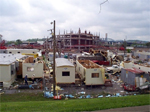
Disasters can be natural or man-made. Natural disasters are caused by nature, such as tornadoes, ice storms, severe weather and flooding. Too much rain and snow, or heavy winds can topple and uproot trees, cause damage to homes and buildings, and cut off electricity, water and telephones. Sometimes, violent weather can cause people to get hurt.
In 1998, tornadoes caused lots of damage to homes, schools, churches and other buildings in Nashville. The tornadoes flipped cars, uprooted many trees and changed the landscape in East Nashville, one of the city's hardest hit areas. Windows in downtown buildings were shattered, and many other neighborhoods were without electricity, phones and water for several days. Tornadoes are natural disasters.
In 2010, a major flood caused widespread damage here in Nashville/Davidson County and surrounding areas. Your school or church may have volunteered or collected money, clothing and other supplies to help families affected by the floods. A flood is also a natural disaster.
A man-made disaster could be intentional (in-ten-tion-al) or accidental (ac-ci-den-tal). Intentional disasters happen on purpose and accidental disasters are mistakes. Both have a big community impact on people, the environment or property.
Man-made disasters could involve a hazardous materials spill caused by haulers who move chemicals by truck, train or boat. They could also involve a chemical spill caused from hazardous materials at a facility. An intentional man-made disaster may also involve acts of terrorism.
Natural disasters or violent weather, occur in our area because Nashville has warm, fast - changing weather patterns that often create conditions that are ripe for severe storms.
You can learn more about disasters and weather safety from FEMA kids. Here are some common terms you may hear on TV or the radio when the weather is potentially dangerous:
Tornadoes

Tornado Watch - A tornado could develop, so look out for severe weather. Listen to your local radio and TV station for weather updates.
Tornado Warning - A tornado has been detected by radar or sighted by storm spotters. If you are inside, go to a safe place to protect yourself from shattered glass and flying objects. If you are outside, hurry to the basement of a nearby sturdy building. If there are no buildings close, lay face down flat in a ditch or low-lying area, and cover your head with your hands.
Severe Thunderstorms
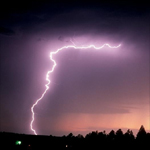
Severe Thunderstorm Watch - Severe thunderstorms are possible in your area. A thunderstorm is a storm with lightening. Severe thunderstorms may bring heavy rain and strong winds, hail and tornadoes. If you are outside, go inside a sturdy building or car. Move away from tall things like trees, fences, telephone lines and power lines because they attract lightening. Also, stay away from metal things that lightening may strike, such as bicycles, baseball bats and camping equipment.
Severe Thunderstorm Warning - A severe thunderstorm has been spotted. A warning is issued when the thunderstorm produces hail ¾ inch or larger, and winds equal or are greater than 58 miles per hour.
Read more about severe thunderstorms
Winter Storms
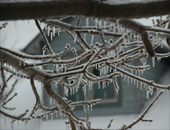
Winter Storm Watch - Snow, sleet and/or freezing rain could happen.
Winter Storm Warning - Snow, sleet and/or freezing rain is falling or very likely. The safest place to be is inside. If you go outside to play after a snow storm, dress in many layers and wear a hat and mittens.
If you start to shiver a lot and get tired, or your nose, fingers and toes start to feel numb - go inside and tell an adult.
Flash Floods
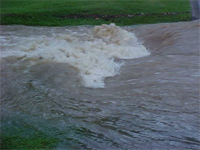
Flash Flood Watch - Flooding is possible in your area. People in the flash flooding area are urged to be ready to take quick action if flooding occurs. Listen to the local radio or TV station for flood information.
Flash Flood Warning: Is a dangerous situation where rapid flooding of small rivers, creeks and streams is possible or already happening. Very heavy rain that falls in a short period of time can cause flash flooding. If you come upon flood waters, turn around and go the other way. Climb to higher ground.
Never try to walk, swim or dive into the water because it may be moving too fast. Never play around high water, ditches, storm drains, ravines or culverts.
When A Disaster Strikes
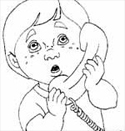
A disaster can happen at any time, but the best way to protect yourself is to be prepared. When people know what to do, everyone is able to plan better for an emergency or disaster.
Here are some steps you and your family can take to be prepared when a disaster strikes:
- Learn when and how to use 911. Only dial 911 if a police officer, firefighter or ambulance is needed because someone's life is in danger. This is called a life threatening situation, and it is the only time you should dial 9-1-1.
- Memorize important phone numbers. Don't rely on a cell phone working just in case the phones battery dies.
- Post emergency numbers by all telephones at home: Include the work and cell phone numbers of your mom and dad.
- Assemble a family emergency kit. This emergency kit should have a three-day supply of water and food for each member of your family. Also include a flashlight, batteries, medication and others things your family might need. For more ideas, visit out our page on Family Emergency Kit.
- Organize a Family Preparedness plan: Ask the adult in your home to designate two special places to gather outside in the event of a real emergency. Make sure everyone in your home knows the plan. For more ideas, visit out our page on having an emergency plan.
- Ask your parents to take CPR and first aid, and if your old enough, take it with them! CPR can help save the life of a loved one who is choking, having a heart attack or a stroke.
Know Where to go When the Sirens Blow
The Office of Emergency Management is in charge of Nashville's outdoor early warning system. This system warns people who are outside of a possible tornado, so if you hear our sirens go off, get indoors and seek shelter immediately. There are 93 sirens located around the county in parks, near school playgrounds and in other places where people gather outside. We test the sirens on the first Saturday of every month at noon, unless there is stormy weather in the area.
Listen to the sound our tornado siren makes
- If you are outside when the sirens blow, go to a sturdy building. Go to an interior wall, away from windows, and cover your head.
- If you are not near a sturdy building and the storm is there, find a ditch or low-lying area, lay down and cover your head.
Fun in the Sun
For many of us, the summer season means longer days and more hours of fun in the sun.
When running, playing sports or doing other activities in the heat, you need to stay safe. Remember to dress in loose-fitting clothes, drink plenty of water, and take frequent breaks in the shade or other cool places.

Don't get so busy playing that you forget to notice the dangers of dehydration (not having enough water):
- Dizziness
- Stomach cramps
- Leg cramps
- Fainting
- Flushed cheeks
- Easily annoyed
If you feel any of these symptoms, get to a cool area, drink plenty of water and tell your parents.
Have a safe summer, and remember to drink plenty of water before, during and after activity to replace the fluids your body loses when you sweat.
Tropical Storms
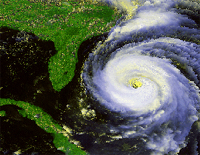
Hurricanes can occur at any time, but the official hurricane season in the Atlantic Ocean is June 1 – November 30. On average, there are six hurricanes each year and they happen most often in August, September and October.
A hurricane is a type of tropical storm that forms in the southern Atlantic Ocean, Caribbean Sea, Gulf of Mexico or in the eastern Pacific Ocean. The storms need warm tropical oceans, moisture and light winds above them to gain strength. When the storm's winds reach at least 74 miles per hour, it becomes a hurricane. These can last 1 to 30 days, and stretch more than 500 miles in diameter.
Read more about tropical storms
Types of tropical storms
Tropical Depression: Thunderstorms with sustained winds of 38 miles per hour or less. Generally, a tropical depression is less dangerous than a hurricane. Still, it can be violent and hurt people. Winds are not the greatest threat, but a tropical depression can cause heavy rains, flooding and tornadoes. Tropical Storm - Strong thunderstorms with winds of 39 to 73 miles per hour. A tropical storm is also less dangerous than a hurricane, but it can also be violent and hurt people. Tropical storms also produce heavy rains, severe storms, flooding and tornadoes - even though winds are not the greatest threat.

Hurricanes: Tropical storms that form in the southern Atlantic Ocean, Caribbean Sea, Gulf of Mexico or the eastern Pacific Ocean. When the storm's winds reach at least 74 mile per hour, it becomes a hurricane. Hurricanes are called typhoons when they occur in the western Pacific Ocean. When they occur in the Indian and southern Pacific Oceans, they are called cyclones.
Forecasters use to name tropical storms and hurricanes after women - like Betsy, Isabel and Kate. In 1978, the National Hurricane Center changed the practice to include male and female names. Hurricane names have an English, French, Spanish and Dutch flavor because the storms affect other nations and are tracked by people and weather services in many countries. Hurricanes are named in ABC order as they happen. The first hurricane has a name that begins with "A" and the second has a name that begins with "B" and so on. The list contains names that begin with letters A through W, but the letters Q and U are not used. The National Hurricane Center has more information on the history of naming hurricanes.
What's the weather like?

Meet some of the people who help us answer that question every day…
The National Oceanic and Atmospheric Administration's National Weather Service (NOAA) is an organization of scientists and researcher who gather data about the oceans, atmosphere, space, and sun. This helps us learn more about the weather and our environment. It's easy for us to decide if it is warm enough to wear shorts or cold enough to light the fireplace.
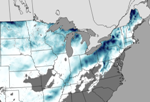
NOAA uses radars, satellites and other technology to give us early warnings about tornadoes, snow and other dangerous weather. It helps us decide whether it is safe to fly in a plane, ride the bus to school, or just stay at home.
NOAA also provides research and information that helps protect the animals and plants that live in our waters and on or in our land. The work at NOAA touches our lives in many ways. .
Forecasters at the National Hurricane Center keep a constant watch on tropical cyclones during hurricane season. They prepare and issue forecasts, warnings and watches to help people get ready for violent weather. The National Hurricane Center is the main source of weather information for countries all over the world. The Center works with the Tropical Prediction Center to be America's calm, clear and trusted voice when dangerous weather strikes.
The 53rd Weather Reconnaissance Squadron is best known by the name 'Hurricane Hunters'.
The Air Force Reserve unit works with the National Hurricane Center to track the path and patterns of tropical storms. During hurricane season, the Hurricane Hunters fly into tropical storms to collect data that cannot be gathered on the ground. They help weather forecasters determine the strength of storms and make early decisions about whether people should evacuate or shelter in place. Sometimes the unit is called upon to fly missions into winter storms.
Meteorologists (me-te-or-ol-o-gist) and weather forecasters predict the weather. They use radars, maps, data from the National Weather Service and other sources.
In Nashville, the Office of Emergency Management (OEM) is the primary warning point for severe weather and community disasters. The OEM officers keep an eye on the weather all the time. They are looking out for tornadoes, thunderstorms, flooding and other problems. Before, during and after a storm - OEM works with other agencies and the media to make sure people are safe when the weather is dangerous.
Just For Fun!
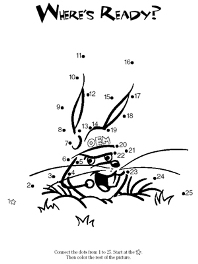
Complete this "Where's Ready" activity book from the Ready for Anything Emergency Family Handbook. Help Ready Rabbit make an emergency kit, and stay safe in the book! Just open, click and print!
Learn more from these websites for more kids:
